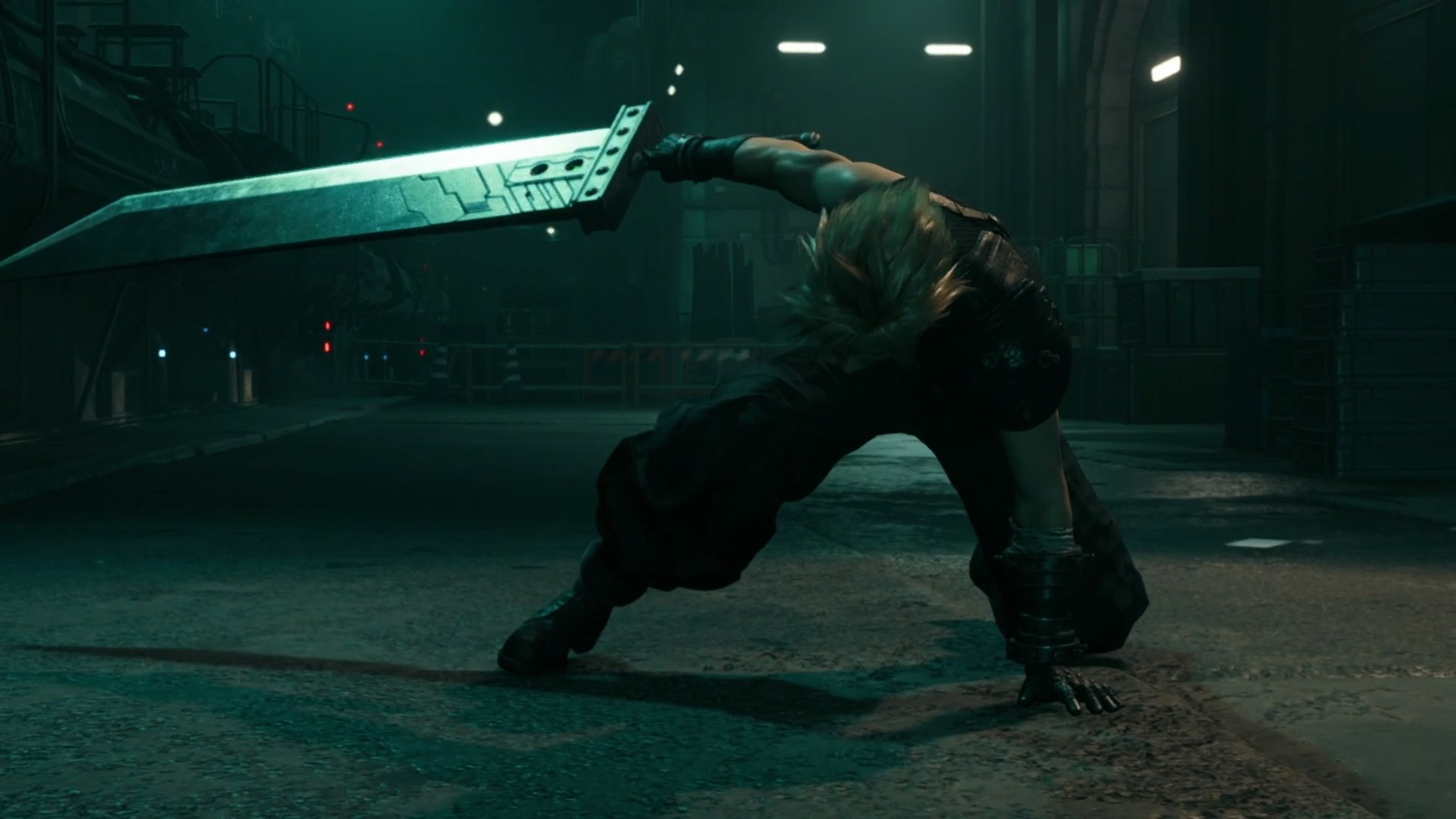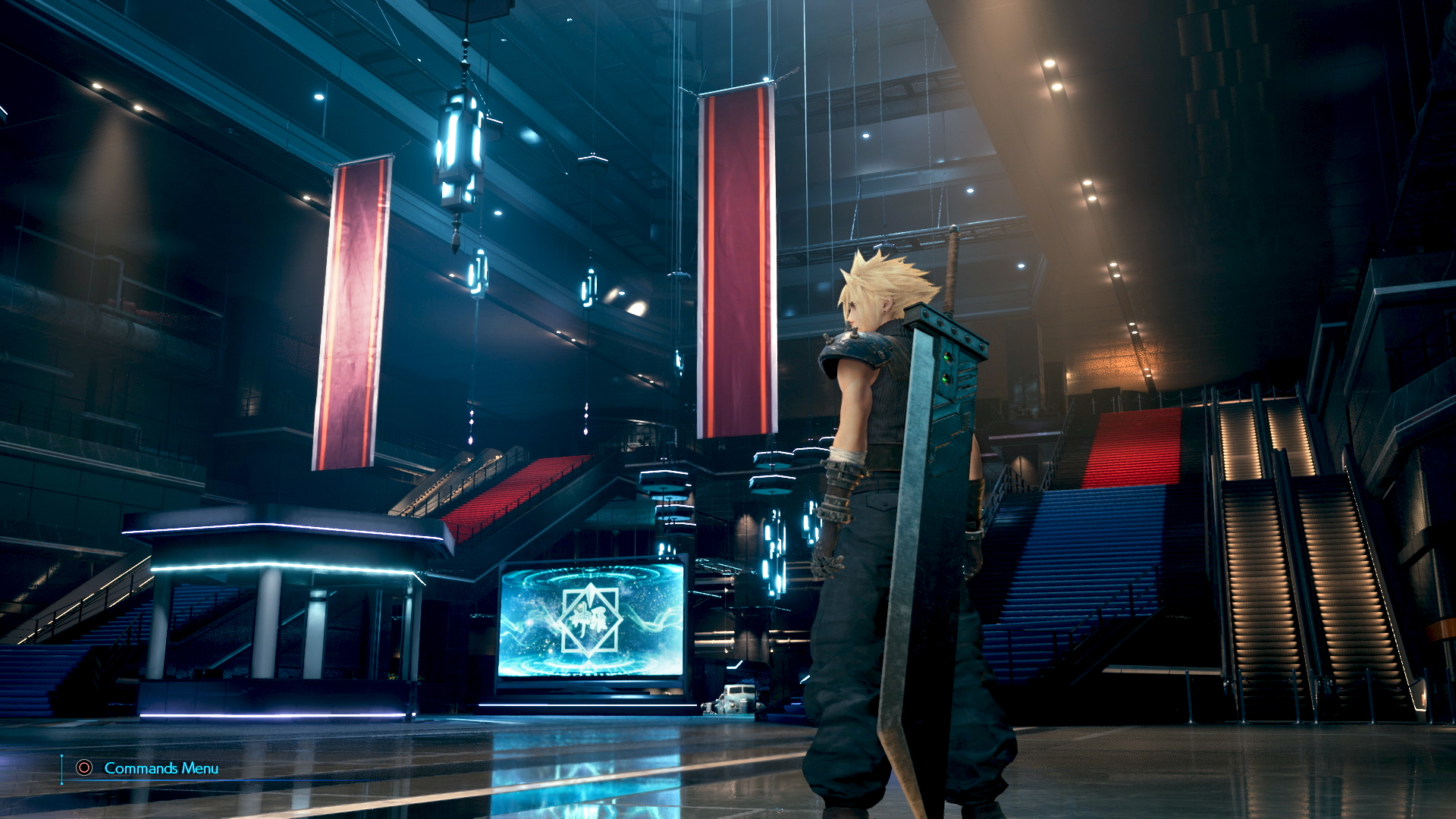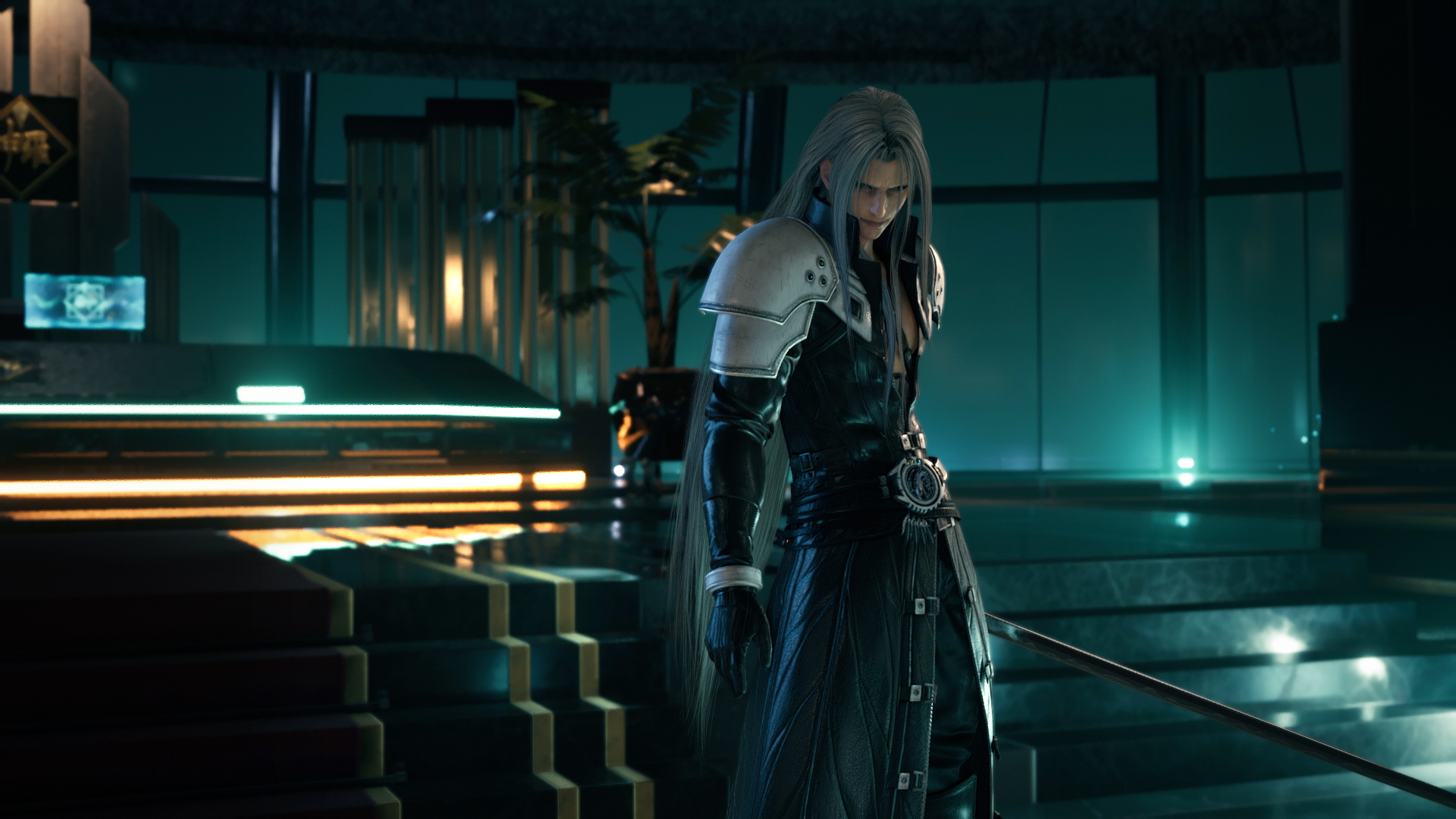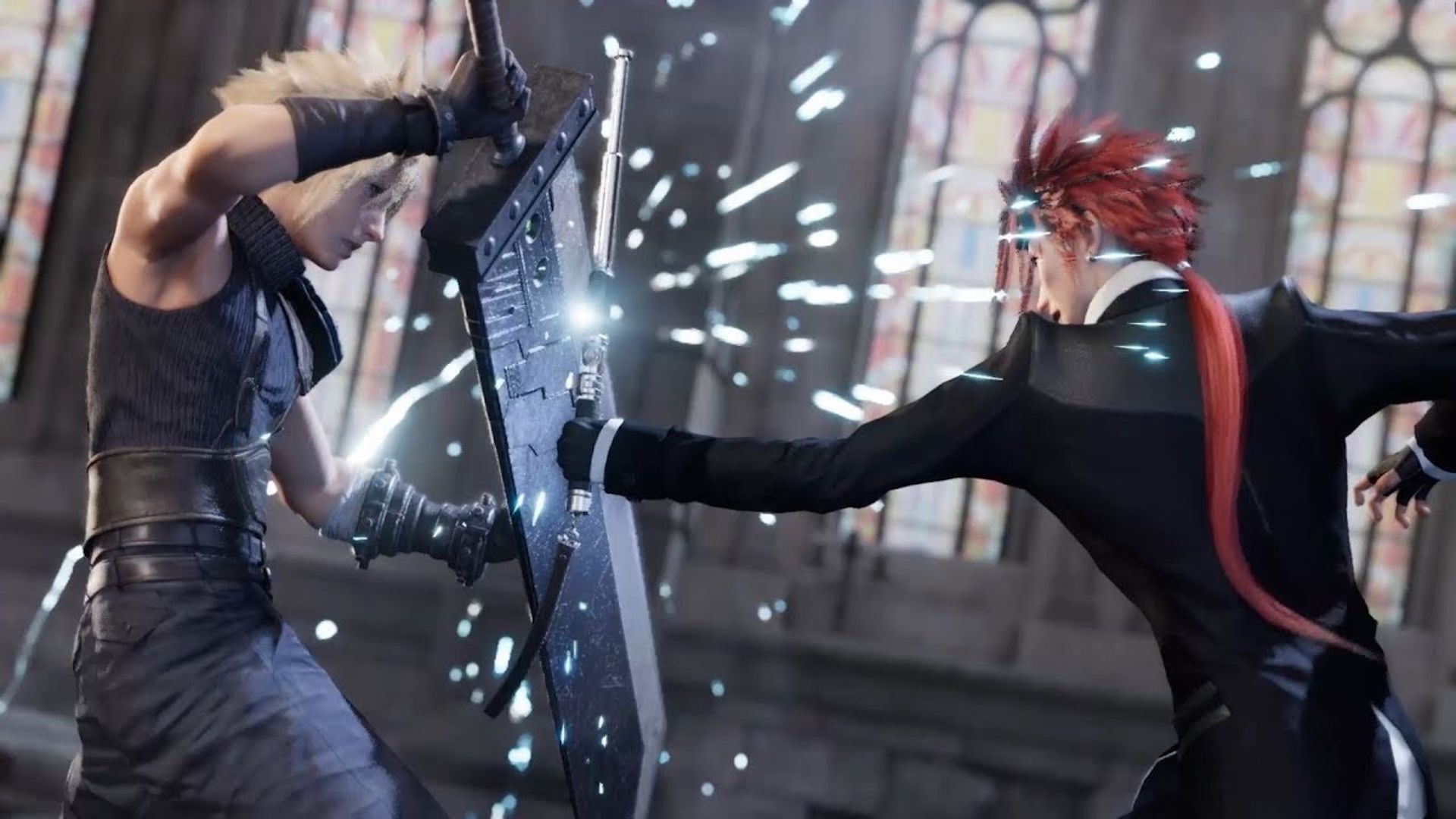
When it came out in 1997, Final Fantasy 7 was one of the most important releases on PlayStation 1. It set a high narrative benchmark that other JRPGs have aspired to in the years to come. But it was also a technical marvel for its time. The PS1 was the first major console to ship with CD-ROM storage. This meant that the console had orders of magnitude greater space per game than the N64 or Sega Saturn.
Final Fantasy 7 was one of the earliest titles to make extensive use of cutscenes, which carried the narrative forward and put faces on the blocky polygon models.
Over twenty years later, Square Enix is releasing Final Fantasy 7 Remake, a top-down reimagining of the classic. It’s amazing what two decades of technology progress can do. In-game visuals in Remake are far, far better than the original’s pre-rendered cutscenes. This game was seemingly made just for those people who’d grow wistful when a cutscene ended and they were dropped back into the PS1’s hardware reality. In the same vein as Resident Evil II, this isn’t a reissue of the PC port or even a remaster of existing assets. It’s Finally Fantasy 7, built from the ground up on Unreal 4, to leverage the full power of the PS4. Let’s take a deep dive and find out this restored classic has to offer.
Engine overview
Final Fantasy 7 Remake is built on the Unreal 4 engine. This is an interesting choice for a couple reasons.
For starters, Square Enix already leverages the excellent, in-house Luminous engine for Final Fantasy. Luminous powers Final Fantasy XV and allows developers to craft worlds that are wide in scale and intimate in detail. Luminous was as built with open worlds in mind, accommodating Final Fantasy XV’s large explorable area. As a remake (as opposed to a reimagining), Final Fantasy 7 Remake is constrained, more or less, to the play space that Final Fantasy 7 on PS1 occupied. In this way, it’s similar to Halo: Anniversary and Gears of War: Ultimate. Functionally, this is a very different game from Final Fantasy XV.
Moreover, Final Fantasy 7 Remake has been in development for at least 4 years, with the team working in parallel to the one that worked on Final Fantasy XV’s final iteration. All these factors–that it’s a relatively smaller-scale project, that its design is at odds with games on Luminous, and that it was being developed in parallel to Final Fantasy XV–likely contributed to Square Enix’s decision to go with Unreal 4. But this is an engine that scaleshow remarkably well–from mobile ports all the way up to today’s most demanding PC games. How much of the Unreal 4 feature set does Final Fantasy 7 Remake utilize? At TGS 2019, we got a fresh take on gameplay and cinematics. Let’s take a look.
Materials and Textures
Final Fantasy 7 Remake utilizes Unreal 4’s physically based rendering pipeline for realistic surface materials. Rubble, and metal objects like Cloud’s sword benefit from this. It is, however, a mixed bag. The floor surface and bed in a jail cell look distinctly flat. Together with a heavy depth of field effect that robs near-field textures of detail, materials have an almost last-gen look to them in places. Texture resolution remains fairly high across the board, though. We see excellent skin textures, as well as plenty of high frequency detail on surfaces like gloves. However, we noticed that a low level of anisotropic filtering is in play here, possibly 4x. This results in distant ground textures looking noticeably blurry. When combined with the heavy depth of field, a lot less detail is resolved in the final image than we’d expect.
Lighting
Lighting is an area of strength for Unreal 4 and this is the area where Final Fantasy 7 Remake really stretches its wings. There is a lot of interplay between different light source and we suspect Unreal’s Lightmass global illumination module may be in use here. As it uses deferred rendering, Final Fantasy 7 Remake is able to display a very large number of emissive lidght at a given point of time. This is especially evident in the scene where Cloud rides on a train that’s hurtling over the city at night. Unfortunately, there are some cutbacks to dynamic lighting during gameplay. Unlike some titles we’ve looked at recently, like Marvel’s Avengers, particle effects aren’t emissive in most cases. While particle volumes can be dense the effect tends to fall flat as there’s little light interaction between the particles and the environment.
Model Quality
Model quality is average for a late eighth-gen title, though character models are incredibly impressive when compared to their PS1 counterparts. Square Enix uses relatively low polygon models and environments that can come off as a bit sparse. A brief subway train scene showcased sparse, flat interiors. However, Final Fantasy 7 Remake’s distinctive art style more than makes up for the technical shortcomings of model quality. Characters strike a balance between realism and exaggeration, in the same vein as Gears of War. And because so many characters have spiky hair, it’s possible to use shading and quality textures to create the illusion of detail, even at lower poly counts. Square Enix does pay attention to the environmental assets that are onscreen, though. For instance, in that same subway scene, we see perfectly rounded handles. And later on, a darts board that shows no signs of blockiness whatsoever. Tessellation is likely being deployed.
Post-process pipeline
Post-process effects in Final Fantasy 7 Remake are over the top and, for better or for worse, mask much of the asset work. As we mentioned before, a heavy, yet low quality depth of field effect is in use here. In cutscenes, the shallow focal length emphasizes characters, but blurs everything else. And without a pronounced bokeh effect, DoF simply makes it appear as if textures are resolving in at a lower level of detail. On the other hand, motion blur is handled well. The game utilizes both camera and per-object motion blur, albeit with a certain heavy-handedness. Bloom is also generously utilized. While many light sources aren’t emissive, a strong bloom effect creates the illusion that they are. But between the bloom lighting and heavy depth of field, it feels like little of the raw framebuffer comes through. As a direct remake of a late 90s JRPG, a certain amount of stylization is alright, and it definitely works in this case. But, in places, the excessive post-processes causes detail to be lost.
Conclusion
Final Fantasy 7 Remake isn’t an exceptionally good looking eighth-gen game. But, as with Fable Remake, Halo: Anniversary, Gears of War Ultimate and even Age of Empires Definitive Edition, we don’t think that that’s the point of the game. Rather, it’s to translate the essence of a classic older title to suit modern tastes and hardware. Final Fantasy 7 Remake doesn’t push 2019’s graphical boundaries. But, for returning Final Fantasy 7 players, every moment is a reminder of the astonishing progress visuals have made since the turn of the century.





















